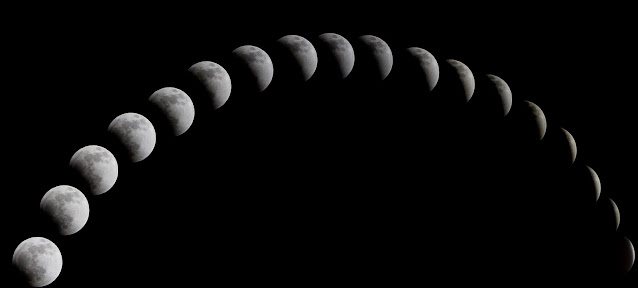How to Watch the Lunar Eclipse in the USA.
 |
| How to Watch the Lunar Eclipse in the USA. |
Step by step guide of how to watch a lunar eclipse.
The eclipse begins in the pre-dawn hours of Jan. 20 as the Moon starts to move into the shadow of the Earth. The first visible bit of the eclipse will be from the eastern hemisphere of the globe and the Western Hemisphere of the world. The last bits of the eclipse will be seen in the Americas, with the last time of totality in the U.S. happening from 2:49 a.m. PT through 3:00 a.m. PT on Jan. 21. A lunar eclipse cannot be seen in North America because it will be happening during the wee hours of the morning.
With the exception of the Eastern Hemisphere, the eclipse will start around 3 a.m. ET and reach totality between 6:30 a.m. ET and 8 a.m. ET. The eclipse will end before 9 a.m. ET.
What is a lunar eclipse?
As the Moon orbits the Earth, we see a brilliant yellow star on it's surface. This is because we see it just as it rises, and it set when it is at its lowest point in the sky. As a result, it appears to have a ring or halo around it.
At the moment, the Moon is passing through the centre of the Earth's shadow, or Umbra, which is what causes the eclipse.
The most spectacular eclipse occurs when the Sun, the Earth and the Moon are lined up just right, known as an eclipse of the Sun, and the Moon is unable to escape the Umbra.
This often occurs at new moon when the Moon is at its darkest.
The best time to see an eclipse is on a new moon, but if you miss it, you'll have a second chance for the last quarter on July 27.
The next time this will happen in the United States is June 9, 2022.
Timing and the best viewing locations.
The lunar eclipse is set to begin in the early hours of January 31st and peak at 3.33am GMT on January 31st, with the entire eclipse occurring at midnight UTC. Unfortunately, American audiences will not be treated to the longest duration of the eclipse, which will peak at 4.41am GMT on January 31st. The period of totality will last a total of 2 hours and 43 minutes, but if you're in America, you'll miss this, as the duration of totality will be only one hour and 16 minutes.
But, luckily for viewers in South Africa, Australia, North America, Central and South America, New Zealand, and most of the Pacific and Indian oceans, you'll have a whole hour and 33 minutes to observe the eclipse without the need for special viewing equipment.
East Coast, West Coast, or Central Time Zone.
The best time to watch is between 6 and 9 p.m. Eastern Time
Central Time, Mountain Time Zone
The eclipse will be visible from anywhere in the Mountain Time Zone, which is when it is 11 p.m.
Pacific Time
The eclipse will be visible in the Pacific time zone, which is 9 p.m.
In the video above, I've outlined the best times to view the eclipse, depending on where you live.
If you live in a large city with lots of outdoor entertainment, this will be a great time for your family to view a total lunar eclipse. The eclipse should be visible through binoculars and telescopes, and the total phase should be quite bright. In this way, you can learn more about the eclipse's various scientific properties, like how the Moon's light travels around the Earth and bends during the total eclipse.
Conclusion.
The full eclipse begins at 10:34:36 a.m. ET.
In North America, the eclipse will reach totality in western parts of North America.
There will be a partial eclipse from Oregon to South Carolina.
The entire event will be visible from New Zealand to Chile.
Find more information about the February 2018 lunar eclipse here.
Why is it called the "Super Blue Blood Moon"?
NASA describes the event as:
A blue moon is the second full moon of the month, often called a "blue moon." January's first full moon was on January 1. But since this will be the second full moon of the month, it's been called a "blue moon" since it will be the second of this month.
A "blood moon" occurs during a lunar eclipse when the Earth's shadow completely covers the moon as it passes into it.






0 Comments